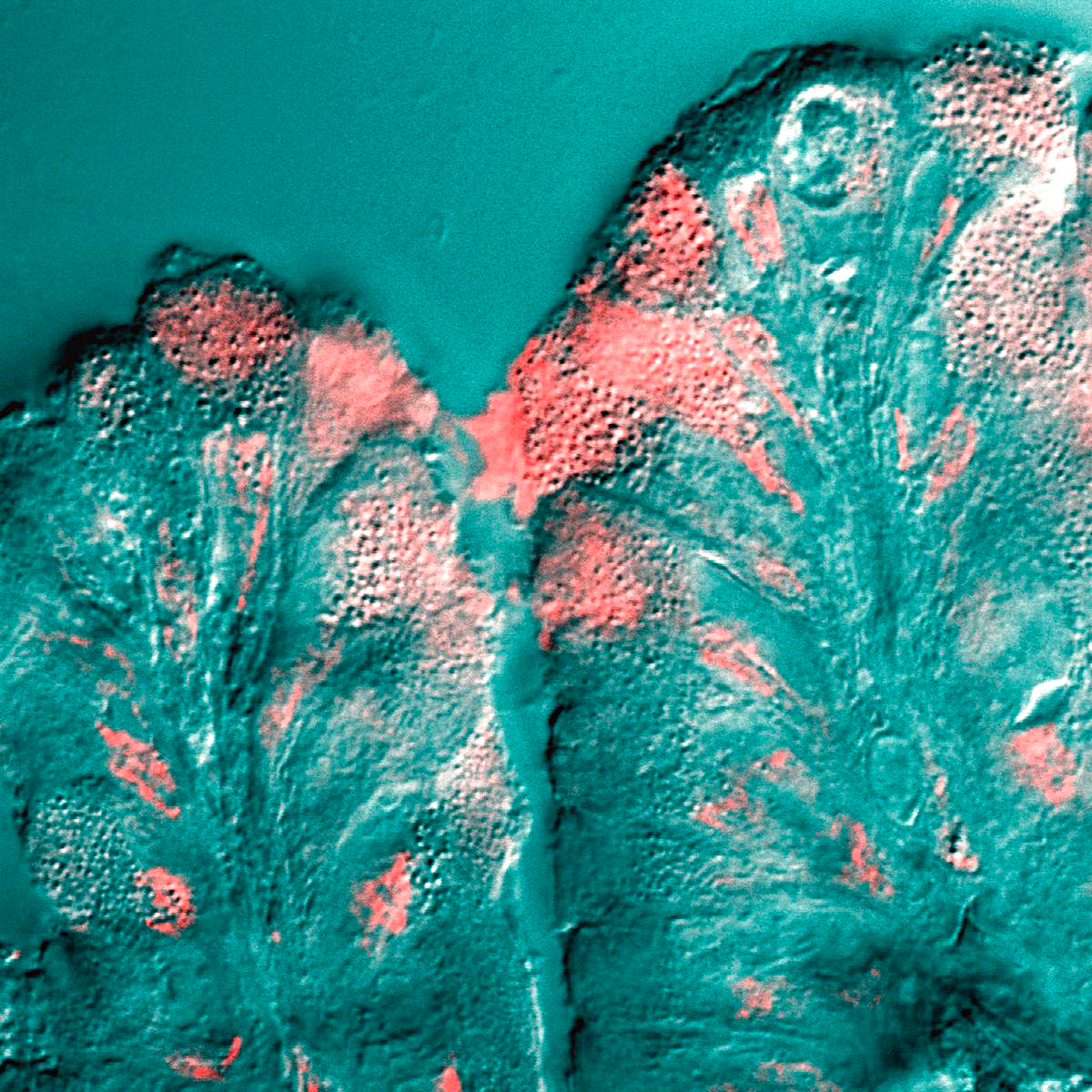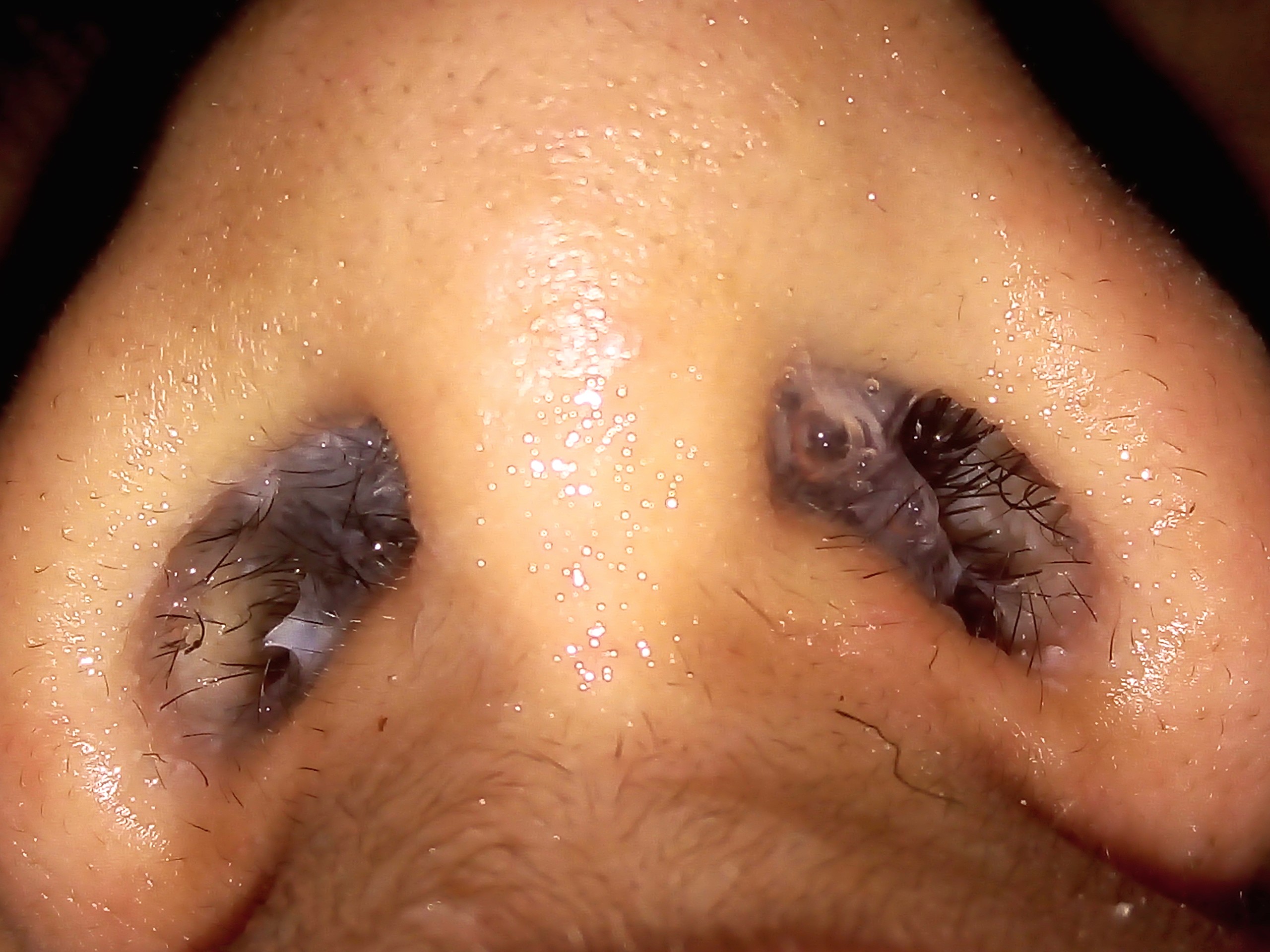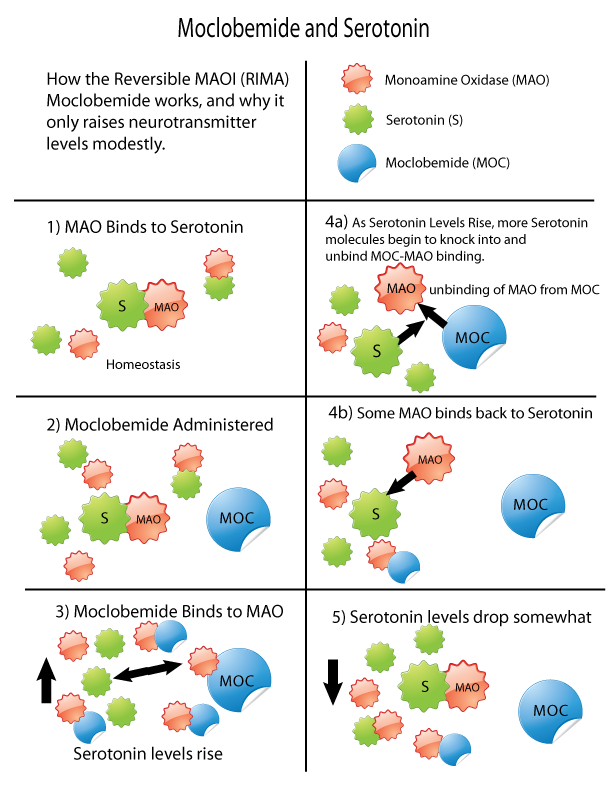|
Decongestant
A decongestant, or nasal decongestant, is a type of pharmaceutical drug that is used to relieve nasal congestion in the upper respiratory tract. The active ingredient in most decongestants is either pseudoephedrine or phenylephrine (the latter of which has disputed effectiveness). Intranasal corticosteroids can also be used as decongestants and antihistamines can be used to alleviate runny nose, nasal itch, and sneezing. Topical decongestants on topical application as dilute solution (0.05–0.1%) produce local vasoconstriction. Regular use of decongestants for long periods should be avoided because mucosal ciliary function is impaired: atrophic rhinitis and anosmia (loss of the sense of smell) can occur due to persistent vasoconstriction. Decongestants can be absorbed from the nose via an inhaler and produce systemic effects, mainly central nervous system stimulation and rise in blood pressure. These drugs should be used cautiously in hypertensives and in those receiving ... [...More Info...] [...Related Items...] OR: [Wikipedia] [Google] [Baidu] |
Pseudoephedrine
Pseudoephedrine, sold under the brand name Sudafed among others, is a sympathomimetic medication which is used as a decongestant to treat nasal congestion. It has also been used off-label for certain other indications, like treatment of low blood pressure. At higher doses, it may produce various additional effects including stimulant, appetite suppressant, and performance-enhancing effects. In relation to this, non-medical use of pseudoephedrine has been encountered. The medication is taken by mouth. Side effects of pseudoephedrine include insomnia, elevated heart rate, increased blood pressure, restlessness, dizziness, anxiety, and dry mouth, among others. Rarely, pseudoephedrine has been associated with serious cardiovascular complications like heart attack and hemorrhagic stroke. Some people may be more sensitive to its cardiovascular effects. Pseudoephedrine acts as a norepinephrine releasing agent, thereby indirectly activating adrenergic receptors. As such, it ... [...More Info...] [...Related Items...] OR: [Wikipedia] [Google] [Baidu] |
Phenylephrine
Phenylephrine, sold under the brand names Neosynephrine and Sudafed PE among others, is a medication used as a decongestant for uncomplicated nasal congestion in the form of a nasal spray or oral tablet, to dilate the pupil, to increase blood pressure given intravenously in cases of low blood pressure, and to relieve hemorrhoids as a suppository. It can also be applied to the skin. Common side effects when taken by mouth or injected include nausea, vomiting, headache, and anxiety. Use on hemorrhoids is generally well tolerated. Severe side effects may include a slow heart rate, intestinal ischemia, chest pain, kidney failure, and tissue death at the site of injection. It is unclear whether its use during pregnancy and breastfeeding is safe. Phenylephrine is a selective α1-adrenergic receptor agonist with minimal to no β-adrenergic receptor agonist activity or induction of norepinephrine release. It causes constriction of both arteries and veins. Phenylephrine ... [...More Info...] [...Related Items...] OR: [Wikipedia] [Google] [Baidu] |
Common Cold
The common cold, or the cold, is a virus, viral infectious disease of the upper respiratory tract that primarily affects the Respiratory epithelium, respiratory mucosa of the human nose, nose, throat, Paranasal sinuses, sinuses, and larynx. Signs and symptoms may appear in as little as two days after exposure to the virus. These may include coughing, sore throat, rhinorrhea, runny nose, Sneeze, sneezing, headache, fatigue, and fever. People usually recover in seven to ten days, but some symptoms may last up to three weeks. Occasionally, those with other health problems may develop pneumonia. Well over 200 virus strains are implicated in causing the common cold, with rhinoviruses, coronaviruses, Adenoviridae, adenoviruses and enteroviruses being the most common. They spread through the air or indirectly through contact with objects in the environment, followed by transfer to the mouth or nose. Risk factors include going to child care facilities, Sleep deprivation, not sleepin ... [...More Info...] [...Related Items...] OR: [Wikipedia] [Google] [Baidu] |
Topical Decongestant
Topical decongestants are decongestants applied directly to the nasal cavity. Their effectiveness by themselves in the common cold appears to have a small benefit in adults. Topical decongestants should only be used by patients for a maximum of 5–7 days in a row, because rebound congestion may occur in the form of rhinitis medicamentosa. When used in adults for a short period of time side effects appear to be few. Mechanism of action Topical decongestants are vasoconstrictors, and work by constricting the blood vessels within the nasal cavity. Examples * Ephedrine * Levmetamfetamine * Naphazoline * Oxymetazoline * Phenylephrine * Propylhexedrine * Pseudoephedrine * Tramazoline * Xylometazoline See also * Decongestant * Nasal irrigation * Nasal spray Nasal sprays are used to deliver medications Route of administration#Local, locally in the nasal cavities or systemic administration, systemically. They are used locally for conditions such as nasal congestion and all ... [...More Info...] [...Related Items...] OR: [Wikipedia] [Google] [Baidu] |
Vasoconstriction
Vasoconstriction is the narrowing of the blood vessels resulting from contraction of the muscular wall of the vessels, in particular the large arteries and small arterioles. The process is the opposite of vasodilation, the widening of blood vessels. The process is particularly important in controlling hemorrhage and reducing acute blood loss. When blood vessels constrict, the flow of blood is restricted or decreased, thus retaining body heat or increasing vascular resistance. This makes the skin turn paler because less blood reaches the surface, reducing the radiation of heat. On a larger level, vasoconstriction is one mechanism by which the body regulates and maintains mean arterial pressure. Medications causing vasoconstriction, also known as vasoconstrictors, are one type of medicine used to raise blood pressure. Generalized vasoconstriction usually results in an increase in systemic blood pressure, but it may also occur in specific tissues, causing a localized reduction in b ... [...More Info...] [...Related Items...] OR: [Wikipedia] [Google] [Baidu] |
Mucus
Mucus (, ) is a slippery aqueous secretion produced by, and covering, mucous membranes. It is typically produced from cells found in mucous glands, although it may also originate from mixed glands, which contain both Serous fluid, serous and mucous cells. It is a viscous colloid containing inorganic ions, inorganic salts, antimicrobial enzymes (such as lysozymes), Antibody, immunoglobulins (especially Immunoglobulin A, IgA), and glycoproteins such as lactoferrin and mucins, which are produced by goblet cells in the mucous membranes and submucosal glands. Mucus covers the Epithelium, epithelial cells that interact with outside environment, serves to protect the linings of the respiratory system, respiratory, Digestion#Digestive system, digestive, and Genitourinary system, urogenital systems, and structures in the Visual system, visual and auditory systems from pathogenic Fungus, fungi, bacteria and viruses. Most of the mucus in the body is produced in the gastrointestinal tract. ... [...More Info...] [...Related Items...] OR: [Wikipedia] [Google] [Baidu] |
Nasal Congestion
Nasal congestion is the partial or complete blockage of nasal passages, leading to impaired nasal breathing, usually due to membranes lining the nose becoming swollen from inflammation of blood vessels. Background In about 85% of cases, nasal congestion leads to mouth breathing rather than nasal breathing. According to Jason Turowski, MD of the Cleveland Clinic, "we are designed to breathe through our noses from birth—it's the way humans have evolved." This is referred to as " obligate nasal breathing." Nasal congestion can interfere with hearing and speech. Significant congestion may interfere with sleep, cause snoring, and can be associated with sleep apnea or upper airway resistance syndrome. In children, nasal congestion from enlarged adenoids has caused chronic sleep apnea with insufficient oxygen levels and hypoxia. The problem usually resolves after surgery to remove the adenoids and tonsils, however the problem often relapses later in life due to craniofacial ... [...More Info...] [...Related Items...] OR: [Wikipedia] [Google] [Baidu] |
Runny Nose
Rhinorrhea (American English), also spelled rhinorrhoea or rhinorrhœa (British English), or informally runny nose is the free discharge of a thin mucus fluid from the nose; it is an extremely common condition. It is a common symptom of allergies (hay fever) or certain viral infections, such as the common cold or COVID-19. Rhinorrhea varies in color and consistency depending upon the underlying cause. It can be a side effect of crying, exposure to cold temperatures, cocaine abuse, or drug withdrawal, such as from methadone or other opioids. Treatment for rhinorrhea may be aimed at reducing symptoms or treating underlying causes. Rhinorrhea usually resolves without intervention, but may require treatment by a doctor if symptoms last more than 10 days or if symptoms are the result of foreign bodies in the nose. The term rhinorrhea was coined in 1866 from the Greek ''rhino-'' ("of the nose") and ''-rhoia'' ("discharge" or "flow"). Signs and symptoms Rhinorrhea is characterized by ... [...More Info...] [...Related Items...] OR: [Wikipedia] [Google] [Baidu] |
Allergy
Allergies, also known as allergic diseases, are various conditions caused by hypersensitivity of the immune system to typically harmless substances in the environment. These diseases include Allergic rhinitis, hay fever, Food allergy, food allergies, atopic dermatitis, allergic asthma, and anaphylaxis. Symptoms may include allergic conjunctivitis, red eyes, an itchy rash, sneeze, sneezing, coughing, a rhinorrhea, runny nose, shortness of breath, or swelling. Note that food intolerances and food poisoning are separate conditions. Common allergens include pollen and certain foods. Metals and other substances may also cause such problems. Food, insect stings, and medications are common causes of severe reactions. Their development is due to both genetic and environmental factors. The underlying mechanism involves immunoglobulin E antibodies (IgE), part of the body's immune system, binding to an allergen and then to FcεRI, a receptor on mast cells or basophils where it triggers ... [...More Info...] [...Related Items...] OR: [Wikipedia] [Google] [Baidu] |
Monoamine Oxidase Inhibitor
Monoamine oxidase inhibitors (MAOIs) are a drug class, class of drugs that inhibit the activity of one or both monoamine oxidase enzymes: monoamine oxidase A (MAO-A) and monoamine oxidase B (MAO-B). They are best known as effective antidepressants, especially for treatment-resistant depression and atypical depression. They are also used to treat panic disorder, social anxiety disorder, Parkinson's disease, and several other disorders. Reversible inhibitors of monoamine oxidase A (RIMAs) are a subclass of MAOIs that binding selectivity, selectively and Enzyme inhibitor#Reversible inhibitors, reversibly enzyme inhibitor, inhibit the MAO-A enzyme. RIMAs are used clinically in the medication, treatment of major depressive disorder, depression and dysthymia. Due to their reversibility, they are safer in single-drug overdose than the older, irreversible MAOIs, and weaker in increasing the monoamines important in depressive disorder. RIMAs have not gained widespread market share in th ... [...More Info...] [...Related Items...] OR: [Wikipedia] [Google] [Baidu] |
Pharmaceutical Drug
Medication (also called medicament, medicine, pharmaceutical drug, medicinal product, medicinal drug or simply drug) is a drug used to diagnose, cure, treat, or prevent disease. Drug therapy ( pharmacotherapy) is an important part of the medical field and relies on the science of pharmacology for continual advancement and on pharmacy for appropriate management. Drugs are classified in many ways. One of the key divisions is by level of control, which distinguishes prescription drugs (those that a pharmacist dispenses only on the medical prescription) from over-the-counter drugs (those that consumers can order for themselves). Medicines may be classified by mode of action, route of administration, biological system affected, or therapeutic effects. The World Health Organization keeps a list of essential medicines. Drug discovery and drug development are complex and expensive endeavors undertaken by pharmaceutical companies, academic scientists, and governments. As ... [...More Info...] [...Related Items...] OR: [Wikipedia] [Google] [Baidu] |






